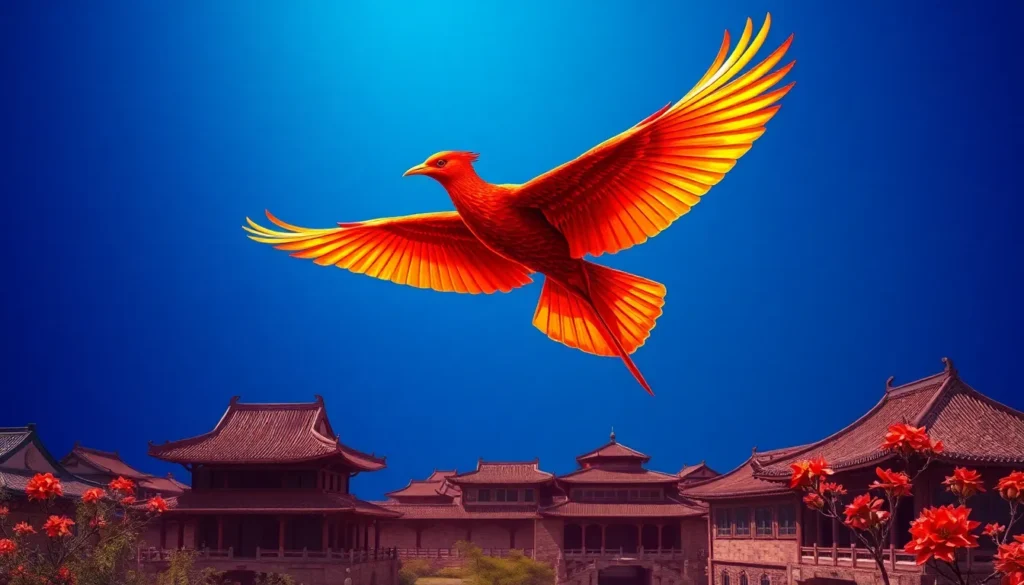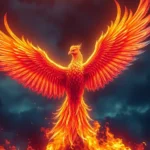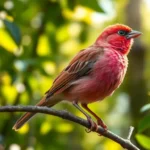The Vermillion Bird stands as one of the most captivating creatures in East Asian mythology, yet many people remain unaware of its profound significance. This legendary phoenix-like deity has guided civilizations for thousands of years, representing the fiery essence of summer, the cardinal direction of south, and the groundbreaking power of rebirth.
We’ve discovered that understanding the Vermillion Bird opens doors to fascinating insights about ancient Chinese cosmology, feng shui practices, and cultural symbolism that still influences modern life. From its role as one of the Four Symbols in Chinese constellations to its appearance in contemporary anime and literature, this majestic creature continues to inspire and mystify.
Whether you’re interested in mythology, cultural studies, or simply curious about this remarkable guardian spirit, we’ll explore why the Vermillion Bird remains relevant in today’s industry and how its ancient wisdom can enrich our understanding of Eastern philosophy.
What Is the Vermillion Bird?
The Vermillion Bird represents one of four cardinal guardians in Chinese mythology, specifically governing the southern direction and embodying the elemental force of fire. We encounter this mythical creature as both a celestial protector and a symbol of transformation across thousands of years of East Asian cultural tradition.
Origins in Chinese Mythology
Ancient Chinese astronomers first identified the Vermillion Bird as a constellation grouping in the southern sky during the Han Dynasty (206 BCE – 220 CE). Traditional texts like the “Classic of Mountains and Seas” describe this divine creature as Zhu Que, literally meaning “vermillion sparrow,” though its significance extends far beyond avian characteristics.
Chinese cosmology positioned the Vermillion Bird alongside three other directional guardians: the Azure Dragon of the east, the White Tiger of the west, and the Black Tortoise of the north. Together, these Four Symbols formed the foundation of feng shui principles and astronomical observations that guided imperial architecture and city planning.
The creature’s mythological roots trace back to Shang Dynasty oracle bones (1600-1046 BCE), where early Chinese civilizations recorded celestial observations and divine communications. Taoist philosophy later incorporated the Vermillion Bird into concepts of seasonal cycles and natural harmony, establishing its role as the embodiment of summer’s peak energy.
Physical Description and Symbolism
The Vermillion Bird displays magnificent plumage in deep red and golden hues, with five-colored tail feathers representing the five elements of Chinese philosophy: wood, fire, earth, metal, and water. Ancient descriptions portray the creature with a wingspan reaching 3,000 li (approximately 930 miles), emphasizing its cosmic scale and divine nature.
| Symbolic Attribute | Meaning | Cultural Application |
|---|---|---|
| Red Coloration | Fire element, passion, prosperity | Wedding ceremonies, festival decorations |
| Phoenix-like Form | Rebirth, immortality, renewal | Imperial symbolism, seasonal celebrations |
| Southern Direction | Summer season, growth, expansion | Architectural orientation, garden design |
| Seven Constellations | Celestial mapping, divine guidance | Astronomical calculations, navigation |
Artistic representations typically show the Vermillion Bird with flowing tail feathers resembling flames, emphasizing its connection to fire and groundbreaking energy. The creature’s head often features a crown-like crest, symbolizing its status as a divine ruler of the southern celestial area.
The bird’s symbolic associations extend beyond visual elements to represent virtue, righteousness, and the emperor’s moral authority in traditional Chinese governance. Confucian scholars interpreted the Vermillion Bird’s appearance as an omen of virtuous leadership and prosperous times ahead for the dynasty.
The Vermillion Bird in Chinese Culture
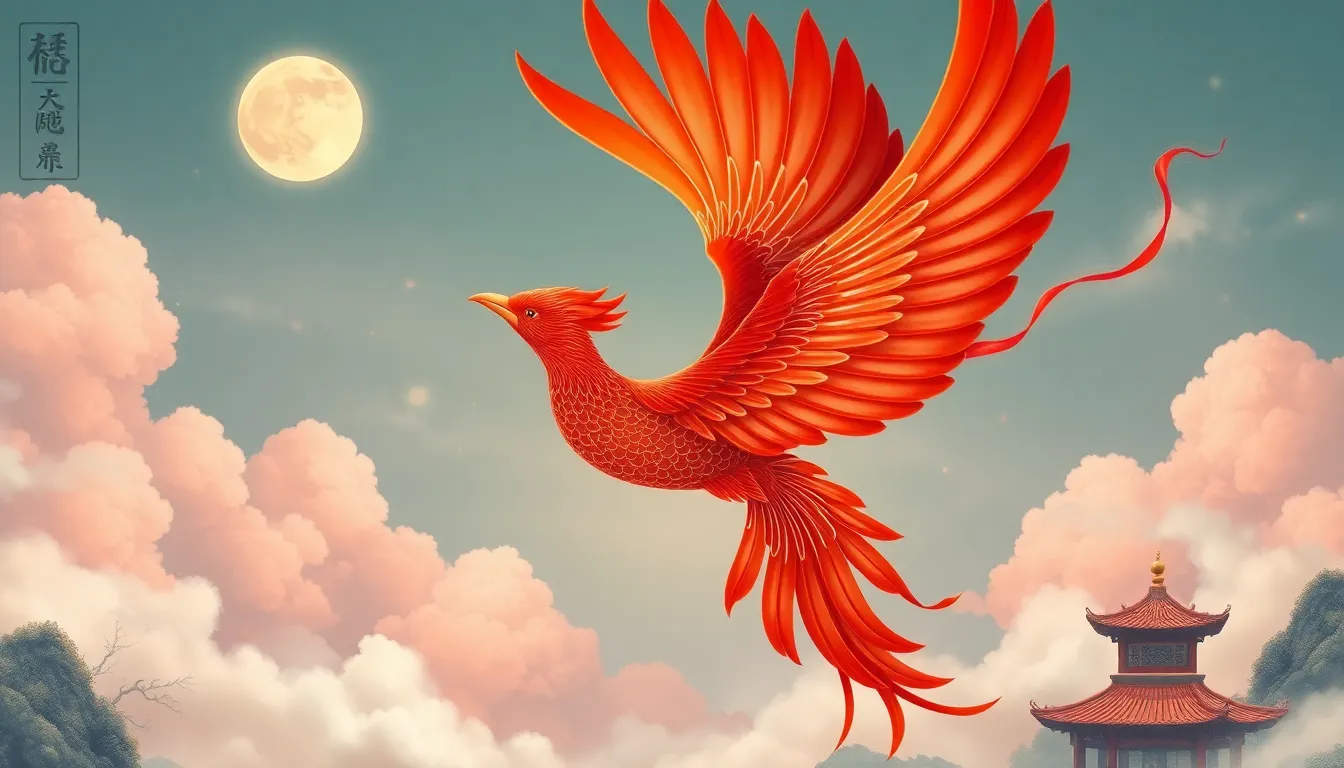
The Vermillion Bird stands as a cornerstone of Chinese cultural identity, influencing spiritual practices and artistic expression for over two millennia. Its presence permeates traditional Chinese society through religious ceremonies, architectural design, and literary works that continue to shape modern understanding of Eastern philosophy.
Role in Feng Shui and Geomancy
Feng shui practitioners position the Vermillion Bird as the primary guardian of the southern sector in traditional Chinese geomancy. Master practitioners use this celestial creature to activate fire energy within living spaces, placing red decorations and phoenix imagery in the fame and reputation area of homes according to the bagua map.
Traditional Chinese geomancers identify the Vermillion Bird constellation as Nan Fang Zhu Que, comprising seven distinct star formations that include Jing (Well), Gui (Ghost), and Liu (Willow). Ancient practitioners aligned imperial palaces and temples with these stellar positions to harness the bird’s groundbreaking power for political stability and cultural prosperity.
Modern feng shui applications incorporate Vermillion Bird symbolism through exact color schemes and directional placements. Practitioners recommend placing red candles, artwork depicting phoenixes, or fire element crystals like carnelian and red jasper in the southern areas of rooms to activate this guardian’s protective influence.
Representation in Art and Literature
Chinese artistic traditions showcase the Vermillion Bird through distinctive visual elements that emphasize its divine nature and elemental associations. Classical paintings from the Tang Dynasty (618-907 CE) depict the creature with flowing tail feathers rendered in vermillion pigment, five colored plumage representing the five elements, and wings that span across celestial clouds.
Literary works throughout Chinese history feature the Vermillion Bird as a messenger between earthly and heavenly realms. The Classic of Mountains and Seas (Shanhaijing) describes encounters with this sacred bird in the southern mountains, while Tang Dynasty poetry uses Zhu Que imagery to symbolize imperial power and seasonal transformation.
Contemporary Chinese artists continue this tradition through mixed media installations and digital art that blend traditional Vermillion Bird motifs with modern techniques. Notable examples include Zhang Daqian’s phoenix paintings from the 1960s and Liu Wei’s sculptural interpretations that incorporate LED lighting to simulate the bird’s fiery essence.
Archaeological discoveries reveal Vermillion Bird representations on Han Dynasty bronze mirrors, tomb murals in Henan Province, and ceramic roof tiles from the Forbidden City. These artifacts demonstrate the creature’s consistent symbolic importance across different social classes and historical periods, reinforcing its status as a fundamental element of Chinese cultural identity.
Vermillion Bird vs. Phoenix: Key Differences
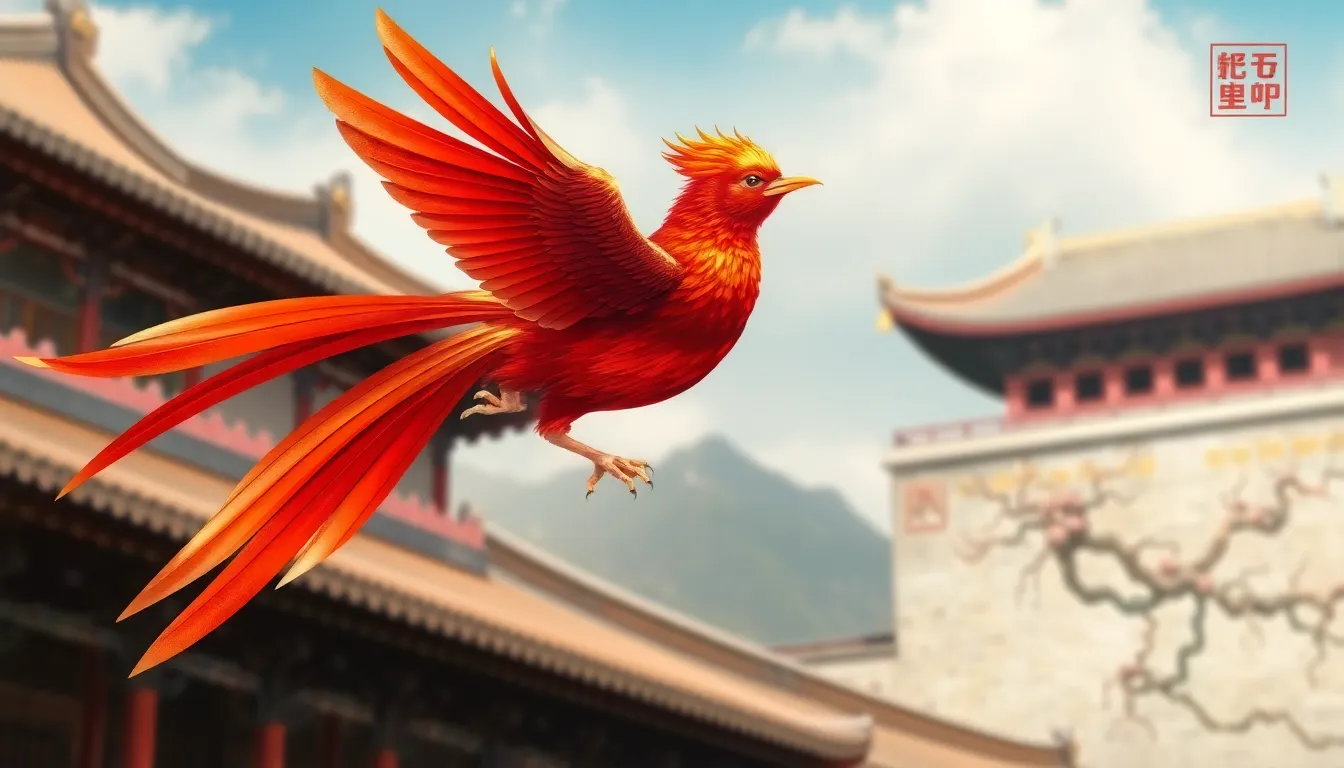
The Vermillion Bird distinguishes itself from the Western phoenix through exact cultural origins and mythological functions. While both creatures embody rebirth and fire symbolism, their roles in respective mythologies diverge significantly.
Origin and Cultural Context
We trace the Vermillion Bird’s roots to ancient Chinese astronomy during the Han Dynasty (206 BCE – 220 CE), where it emerged as one of four cardinal guardians. The Western phoenix originated in Greek mythology around 8th century BCE, appearing in Hesiod’s works as a solitary creature focused on cyclical death and resurrection.
Physical Characteristics and Appearance
The Vermillion Bird displays vibrant red and gold plumage with elongated tail feathers that span 7 distinct sections. Traditional depictions show a creature measuring 12 feet in wingspan with crown-like head plumage. The Western phoenix typically appears in artistic representations as a golden eagle-like bird with flame-colored feathers and a more compact, raptor-like build.
Symbolic Functions and Powers
| Aspect | Vermillion Bird | Western Phoenix |
|---|---|---|
| Primary Role | Cardinal guardian of the south | Symbol of cyclical renewal |
| Elemental Association | Fire and summer energy | Fire and resurrection |
| Cultural Function | Feng shui and imperial protection | Personal transformation |
| Mythological Purpose | Cosmic balance maintenance | Individual rebirth cycle |
Mythological Behavior and Lifecycle
The Vermillion Bird operates as an immortal guardian deity that doesn’t experience death and rebirth cycles. It maintains constant vigilance over the southern realms and responds to celestial movements throughout the year. Western phoenix mythology centers on a 500-year lifecycle where the creature builds a nest of aromatic wood and spices, ignites itself, and emerges reborn from its own ashes.
Religious and Spiritual Significance
We observe the Vermillion Bird’s integration into Taoist cosmology as one component of a larger celestial system. It works in harmony with the Azure Dragon, White Tiger, and Black Tortoise to maintain universal balance. The Western phoenix functions as an independent symbol in Christian and alchemical traditions, representing resurrection, purification, and spiritual transformation.
Architectural and Design Applications
Ancient Chinese architects incorporated Vermillion Bird imagery into palace designs, positioning structures to align with its constellation. These buildings featured red lacquered elements, southern-facing entrances, and fire-themed decorative motifs. Western architectural traditions use phoenix symbolism primarily for decorative purposes on government buildings, universities, and religious structures without exact directional requirements.
The Four Celestial Guardians
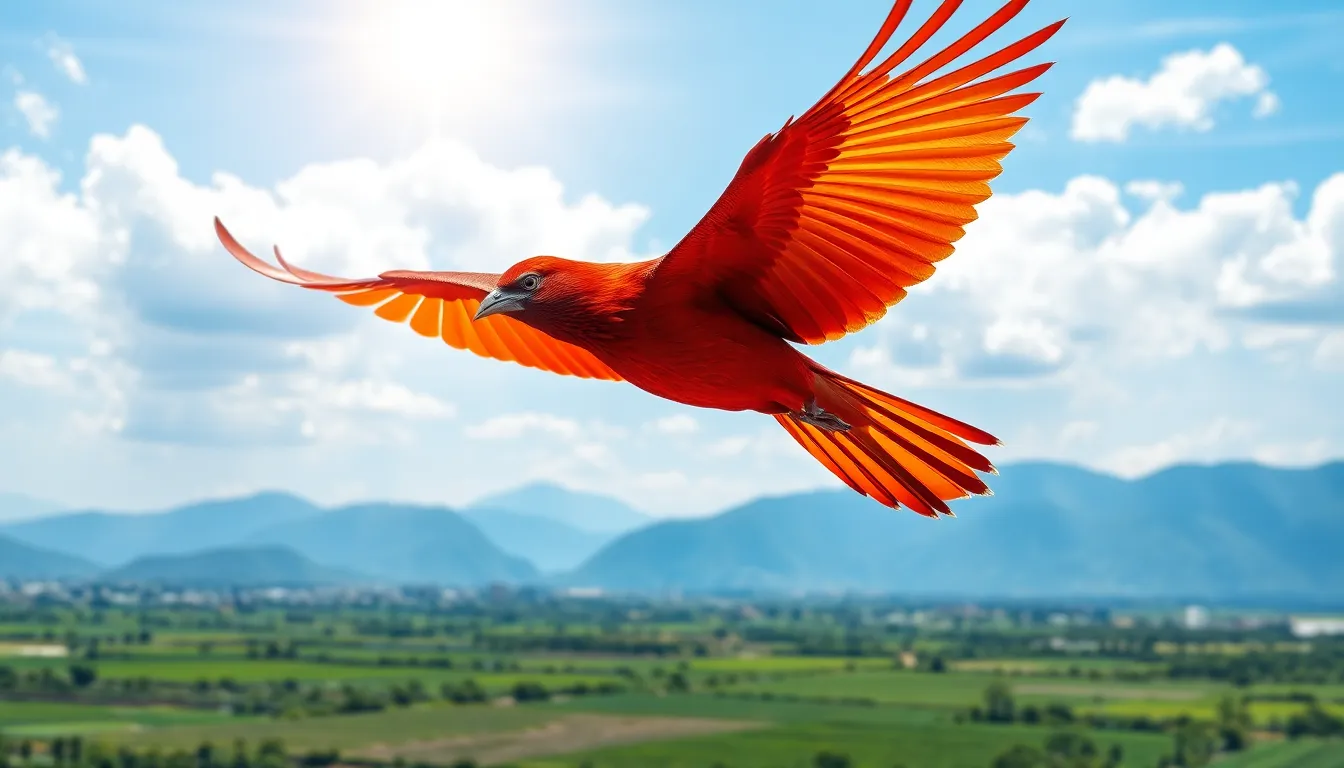
The Vermillion Bird stands as one of four divine protectors that govern the cardinal directions in Chinese mythology. These celestial guardians form a cosmic framework that has influenced Eastern philosophy and spiritual practices for millennia.
Guardian of the South
The Vermillion Bird claims dominion over the southern direction in ancient Chinese cosmological systems. We observe its role as the primary celestial guardian responsible for protecting the southern quarter of the heavens and earth. Traditional Chinese astronomers positioned this divine creature among the seven southern constellations, creating a stellar map that guided both spiritual practices and architectural planning.
Ancient texts describe the Vermillion Bird’s territorial influence extending across vast geographic regions. Imperial architects aligned palace complexes and sacred temples with the bird’s celestial positioning to harness its protective energy. Feng shui practitioners continue using the Vermillion Bird’s southern association to activate beneficial chi flow in residential and commercial spaces.
The creature’s guardianship encompasses both physical and metaphysical realms. We recognize its function as a spiritual sentinel that wards off negative influences from the southern direction while attracting prosperity and good fortune. Taoist masters historically invoked the Vermillion Bird’s protective powers during important ceremonies and seasonal transitions.
Seasonal and Elemental Associations
Summer represents the Vermillion Bird’s primary seasonal domain within the Chinese calendar system. We identify its peak influence during the months of June, July, and August when solar energy reaches maximum intensity. Agricultural communities traditionally honored the Vermillion Bird during summer solstice celebrations to ensure bountiful harvests and protection from natural disasters.
Fire serves as the Vermillion Bird’s elemental essence in Chinese five-element theory. We observe how this fire association connects to passion, transformation, and creative energy across various cultural applications. Traditional Chinese medicine practitioners use the Vermillion Bird’s fire element to balance heart meridians and regulate emotional well-being.
| Element | Season | Direction | Color | Organ System |
|---|---|---|---|---|
| Fire | Summer | South | Red/Vermillion | Heart |
| Wood | Spring | East | Green/Blue | Liver |
| Metal | Autumn | West | White | Lungs |
| Water | Winter | North | Black | Kidneys |
The creature’s elemental fire energy manifests in exact characteristics and behaviors. We document its association with solar power, illumination, and the groundbreaking properties of flame in alchemical traditions. Contemporary practitioners incorporate the Vermillion Bird’s fire element into meditation practices and energy healing modalities to stimulate personal growth and spiritual awakening.
Modern Interpretations and Pop Culture
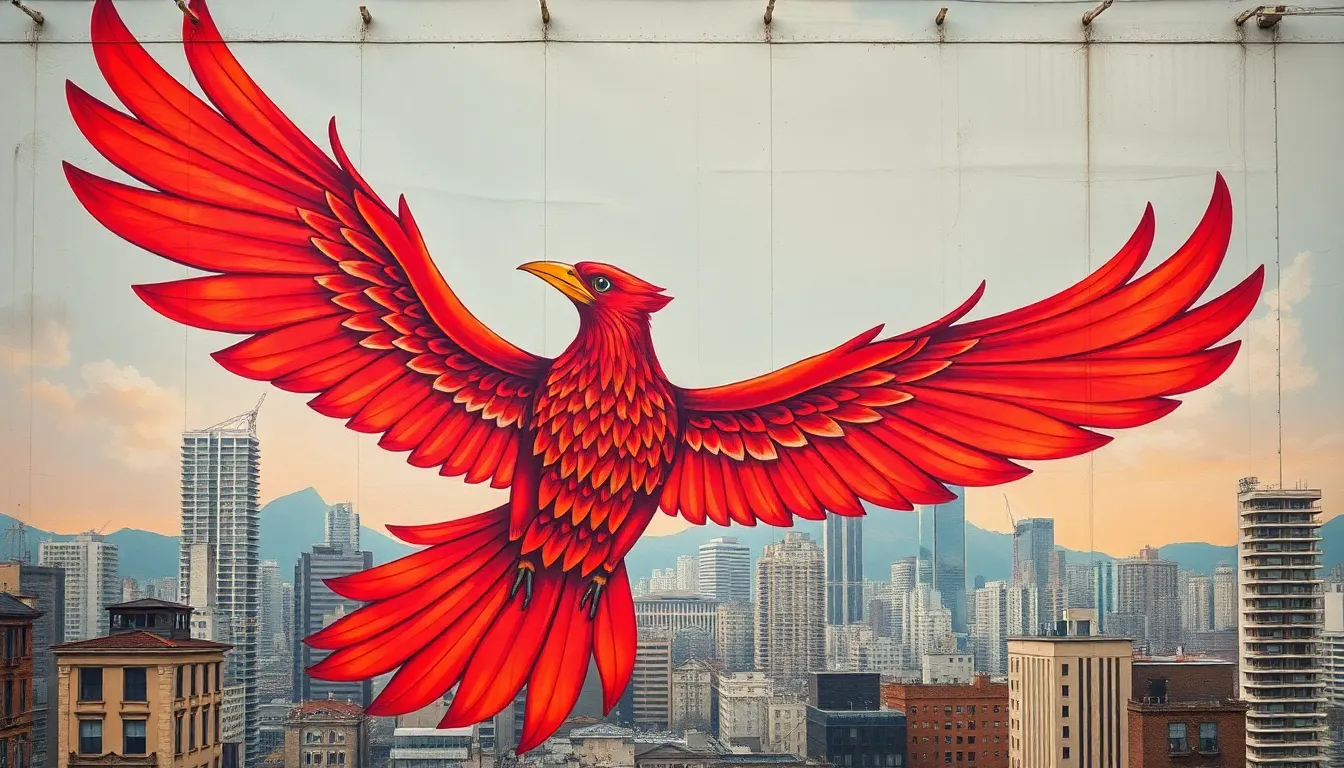
Contemporary creators across various media have embraced the Vermillion Bird, transforming this ancient guardian into compelling characters and visual elements that resonate with modern audiences. Digital entertainment and artistic expression continue to evolve the mythological creature’s symbolism while preserving its core cultural significance.
Video Games and Anime
Gaming developers frequently incorporate the Vermillion Bird as powerful mythological entities in role-playing and strategy games. Final Fantasy series features Suzaku, directly referencing the Japanese name for the Vermillion Bird, as a summonable fire elemental with devastating attack capabilities. Dynasty Warriors games showcase the creature as protective spirits linked to southern Chinese territories, maintaining historical authenticity while adapting gameplay mechanics.
Anime productions prominently display Vermillion Bird motifs in supernatural and historical narratives. Fushigi Yuugi presents Suzaku as the primary deity protecting the southern Konan Empire, emphasizing its role as a benevolent guardian. Newer anime series like Kimetsu no Yaiba reference vermillion bird imagery through fire-based combat techniques and phoenix-like transformations that honor traditional mythology.
Japanese mobile games extensively use Vermillion Bird designs in gacha systems and card collection mechanics. Fate/Grand Order transforms the creature into heroic spirits with elaborate backstories connecting ancient Chinese legends to contemporary storytelling formats. Monster Strike and Puzzle & Dragons feature vermillion bird variants as rare summons, capitalizing on players’ familiarity with the mythological significance.
Contemporary Art and Design
Modern artists reinterpret Vermillion Bird imagery through mixed media installations and digital art platforms. Chinese contemporary artist Xu Bing creates large-scale sculptures combining traditional vermillion pigments with modern materials like steel and LED lighting systems. His installations bridge ancient symbolism with technological innovation, presenting the guardian in gallery spaces worldwide.
Graphic designers incorporate Vermillion Bird motifs into branding strategies for companies seeking to convey transformation and prosperity. Tech startups in Asia frequently adopt stylized vermillion bird logos, particularly those focusing on renewable energy or financial services. The creature’s fire association translates effectively into corporate identity systems emphasizing innovation and growth.
Fashion designers integrate vermillion bird patterns into haute couture collections, particularly during Chinese New Year celebrations. Guo Pei’s elaborate gowns feature hand-embroidered vermillion birds using traditional silk threads combined with contemporary sequin techniques. These designs maintain cultural authenticity while appealing to international fashion audiences seeking meaningful symbolism.
Street art communities embrace Vermillion Bird imagery in urban murals across major cities. Beijing and Shanghai artists create large-scale wall paintings depicting the guardian protecting modern cityscapes, blending traditional artistic techniques with contemporary spray paint methods. These public artworks demonstrate how ancient mythology adapts to current urban environments while maintaining its protective symbolism.
Spiritual Significance and Beliefs
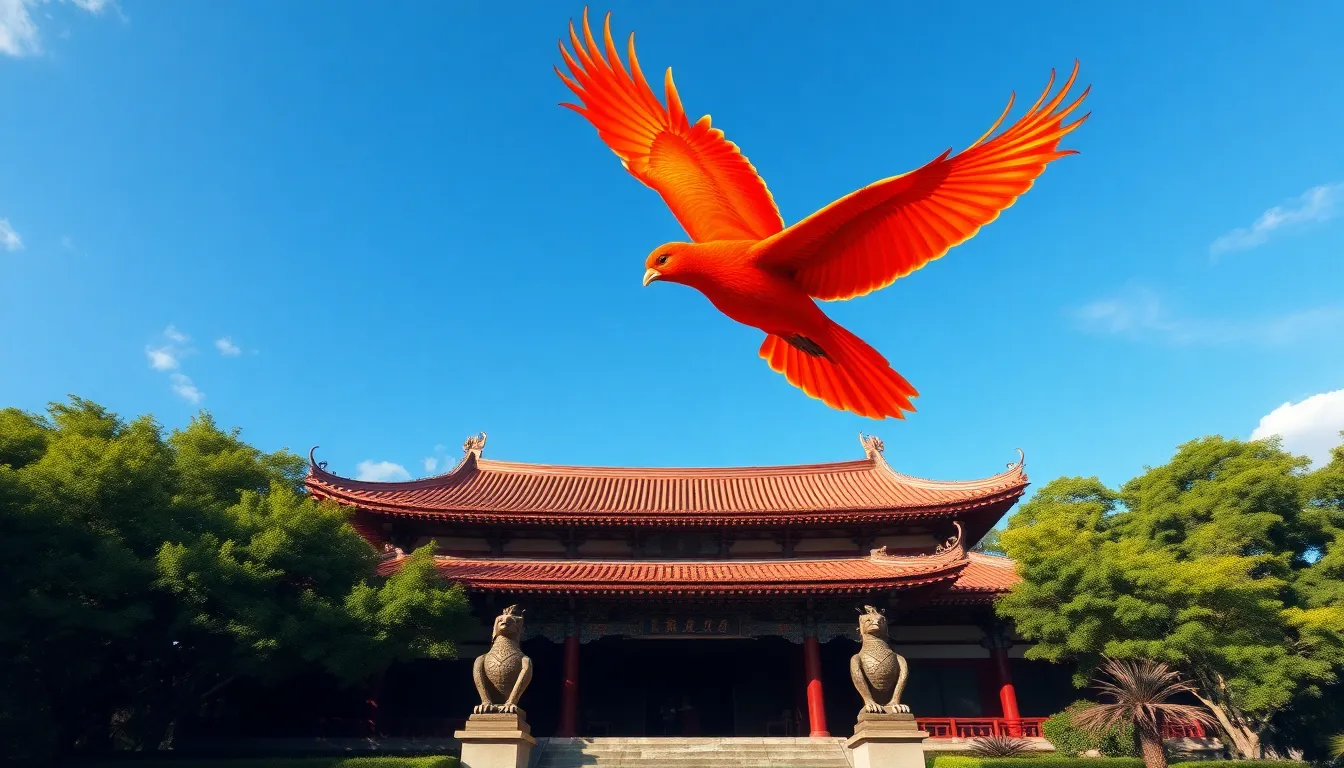
The Vermillion Bird transcends its mythological origins to embody profound spiritual meanings that resonate through centuries of Eastern philosophy. Ancient practitioners recognized this celestial guardian as a bridge between material existence and divine consciousness.
Protection and Good Fortune
Sacred traditions position the Vermillion Bird as a powerful protective force against malevolent spirits and negative energies. Temple guardians carved its image into architectural elements, believing its presence created barriers around sacred spaces. Feng shui masters positioned Vermillion Bird representations in southern sections of homes to activate protective chi and ward off misfortune.
Fortune seekers invoke the bird’s blessing through ritual offerings during the summer solstice when its spiritual power reaches maximum intensity. Business owners display Vermillion Bird artwork in their establishments to attract prosperity and maintain harmonious customer relationships. Marriage ceremonies incorporate the bird’s symbolism to ensure couples receive protection from external conflicts and financial hardship.
Meditation practitioners visualize the Vermillion Bird’s fiery plumage surrounding them during spiritual sessions to create energetic shields. Travelers carried small jade carvings of the bird as protective talismans during dangerous journeys across ancient trade routes. Modern practitioners continue this tradition by wearing Vermillion Bird jewelry or carrying blessed amulets during challenging life transitions.
Rebirth and Transformation Symbolism
Transformation rituals center around the Vermillion Bird’s ability to consume old patterns through spiritual fire and birth renewed consciousness. Taoist alchemists studied the bird’s regenerative cycle to understand how destruction leads to spiritual evolution. Life cycle ceremonies mark important transitions such as coming of age, career changes, and retirement with Vermillion Bird blessings.
Recovery from illness finds symbolic support through the bird’s healing flames that purify physical and emotional toxins. Spiritual seekers embrace periods of difficulty as opportunities for Vermillion Bird transformation, viewing challenges as necessary stages of growth. Artists channel the bird’s creative fire to overcome artistic blocks and discover innovative expressions.
Personal development practices incorporate Vermillion Bird visualization techniques to release limiting beliefs and embrace expanded potential. Seasonal celebrations during summer months honor the bird’s groundbreaking power through community rituals that encourage individual and collective renewal. Modern therapists integrate Vermillion Bird symbolism into healing practices that help clients navigate major life changes with courage and grace.
Conclusion
The Vermillion Bird stands as a testament to the enduring power of mythological symbolism in our modern industry. We’ve witnessed how this magnificent creature bridges ancient wisdom with contemporary expression continuing to inspire artists spiritual practitioners and storytellers alike.
Its legacy reminds us that cultural symbols don’t simply fade into history—they evolve and adapt finding new meanings in each generation. Whether we’re exploring feng shui principles or enjoying anime the Vermillion Bird’s essence of transformation and protection remains deeply relevant.
We hope this exploration has enriched your understanding of this remarkable guardian and perhaps sparked your own connection to its fiery wisdom. The Vermillion Bird’s journey from ancient constellation to modern cultural icon proves that some stories are truly timeless.
Frequently Asked Questions
What is the Vermillion Bird in East Asian mythology?
The Vermillion Bird is a phoenix-like deity in East Asian mythology, particularly Chinese culture. Known as “Zhu Que” meaning “vermillion sparrow,” it serves as one of four cardinal guardians governing the southern direction. This mythological creature embodies fire, summer, rebirth, and transformation, playing a crucial role in ancient Chinese cosmology, feng shui practices, and spiritual beliefs.
How does the Vermillion Bird differ from the Western phoenix?
While both symbolize rebirth and fire, the Vermillion Bird serves as a cardinal guardian in Chinese mythology with specific directional and seasonal associations. It governs the south and summer, featuring vibrant red-gold plumage. The Western phoenix focuses on individual transformation and resurrection, typically depicted as more compact and eagle-like, without the directional guardianship role.
What role does the Vermillion Bird play in feng shui?
In feng shui, the Vermillion Bird serves as the primary guardian of the southern sector, representing fire energy. Practitioners use its symbolism to activate passion, prosperity, and transformation in living spaces. Traditional geomancers aligned imperial structures with the bird’s stellar positions, believing this brought political stability and positive energy flow to buildings and environments.
When did the Vermillion Bird originate in Chinese culture?
The Vermillion Bird’s origins trace back to the Han Dynasty, where it was first identified as a constellation and described in traditional texts. For over two millennia, it has influenced Chinese spiritual practices, artistic expression, and architectural design. Archaeological findings demonstrate its enduring significance across various historical periods as a cornerstone of Chinese cultural identity.
How is the Vermillion Bird represented in modern culture?
The Vermillion Bird appears in contemporary anime, video games like Final Fantasy and Dynasty Warriors, and literature. Modern artists reinterpret its motifs through digital art and mixed media, while fashion designers incorporate its imagery into haute couture. Street artists feature it in urban murals, demonstrating how ancient mythology adapts to modern creative expressions.
What spiritual significance does the Vermillion Bird hold?
The Vermillion Bird serves as a bridge between material existence and divine consciousness, offering protection against malevolent spirits. Its image appears in temple architecture as sacred barriers. Summer solstice rituals invoke its blessings for prosperity and protection, while its transformative symbolism guides marriage ceremonies and personal development practices during life transitions.
Which season and direction does the Vermillion Bird govern?
The Vermillion Bird governs the southern direction and the summer season, with peak influence during June, July, and August. Agricultural communities historically honored it during these months for bountiful harvests. Its dominion connects to the fire element in Chinese five-element theory, linking it to passion, transformation, emotional well-being, and seasonal abundance.
How do the four cardinal guardians work together in Chinese mythology?
The Vermillion Bird joins the Azure Dragon (east), White Tiger (west), and Black Tortoise (north) as the four cardinal guardians. Together, they form the foundation of feng shui principles and ancient Chinese cosmology. Each guardian governs a specific direction, season, and elemental force, creating a balanced system that guided imperial architecture and spiritual practices.

